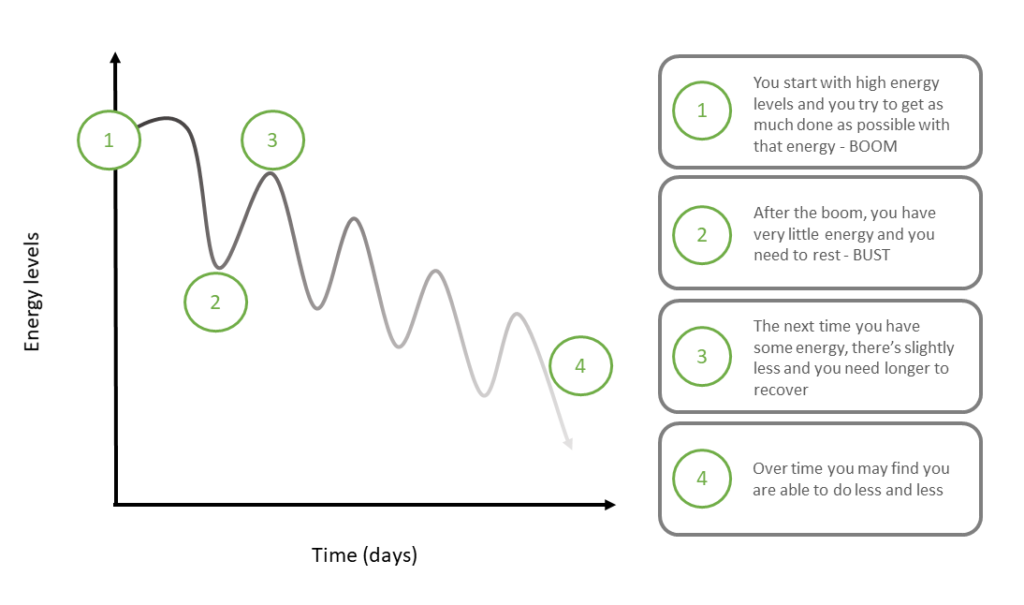Pacing is about:
- trying not to rush things or do too much at once – these can tire you both out, making you both feel worse in the long run
- creating a balance between being active and resting
This sounds simple, but there are a couple of ‘traps’ that carers and patients can fall into which can lead to problems later on:
Trap 1: Boom and bust
Boom and bust is a common cycle that people with health problems can find themselves in. The diagram below explains why this cycle can be a problem:

Trap 2: Resting too much
Energy levels can be unpredictable for people with breathlessness.
It can seem hard to tell which activities will make them tired and which won’t.
For patients it can be tempting not to do anything much at all and just rest. Sometimes carers also take over and do everything for the patient.
Too much rest without activity is actually unhelpful, as it can mean losing fitness and muscle which cause people to feel even more tired.
What you can do to help the patient
- To avoid a boom and bust, where you might do a lot on one day and then rest for several days following, try to keep the amount of activity you and the patient do stable. Think about doing as much on a lower energy day as you do on a higher energy day.
- Try to break down big or long jobs into smaller or shorter tasks with regular breaks in between.
- While it can feel frustrating, and may take longer to do things this way, the patient should have more energy afterwards and avoid the ‘bust’ part of the cycle.
- It’s also important to encourage the patient to do things for themselves. Not enough activity can lead to longer term problems as their muscles weaken and they may lose fitness.
For more ideas of ways to keep active with the patient see Keeping active.
In the video below, carers and patients discuss how they use pacing to manage their activities with breathlessness
Would you like to look at another support topic?
Page last reviewed: 15/12/2025


